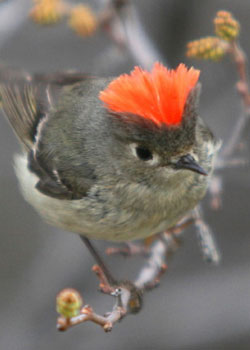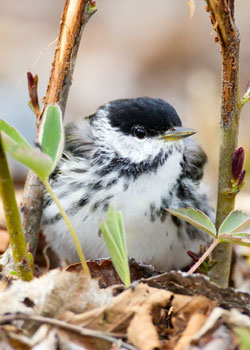The challenge
Canada's vast boreal forests are a bird nursery, with at least 2 billion migratory landbirds, 7 million shorebirds, and 26 million ducks breeding in boreal forests and wetlands.The annual arrival of billions of birds in the boreal is one of the largest migration events on Earth, with many birds travelling thousands of kilometres to get there. In fact, recent research by WCS Canada and partners has revealed that the 12-gram (less than the weight of two toonies) Blackpoll Warbler flies up to 20,000 km round trip between boreal breeding sites and overwintering sites in the Amazon basin.
Unfortunately, long-term monitoring of birds reveals a continuing and dramatic decline in their numbers. For example, two species that breed in boreal wetlands across Canada and Alaska - Rusty Blackbird and Blackpoll Warbler – have both declined by over 90% since 1970. In fact, it’s estimated that Blackpoll Warblers comprise a staggering half of the 1.5 billion breeding landbirds lost in North America since 1970.
The causes of declines include habitat loss, reduced insect food due to pesticides, and a rising death toll from cats and building collisions. The greatest challenge to conserving migratory birds is identifying and reducing threats across their full range – including at sites used during breeding, migration, and over winter. Protecting priority habitats in Canada’s boreal is a critical piece of this conservation challenge.


.jpg?ver=2019-02-26-180717-783)

What we are doing and why
Our efforts are aimed at identifying and protecting critical sites and habitats for migratory birds in Yukon’s boreal mountains.
In particular, we have been focusing on the rich and productive habitats of valley bottoms, such as old-growth forests, floodplain forests, and wetlands, which are also attractive for agriculture and logging. We are also tracking the impacts of salvage logging of burned and beetle destroyed forests on birds and biodiversity. This is a growing issue thanks to increasingly ferocious fires and waves of beetle infestations due, in part, to climate change.
We are also focusing on specific places such as Yukon’s Tintina Trench, a major north-south flyway, to highlight how conservation action such as protecting feeding and resting areas can help a wide range of migratory birds, from ducks and geese to tiny songbirds and help stop the steady losses being seen in migratory bird populations.
Our strategies
Whether identifying lakes that are critical sites for resting and refueling by migrating waterbirds or devising strategies to minimize impacts of logging on birds, our strategy for reversing declines in boreal bird is to identify and secure, through protection or best practices, safe places for them to rest and breed in boreal Yukon.
To address the potential conflict between protecting sites important for birds and other uses of rich valley bottoms, we are working to establish best-management practices for these key habitats, as well as developing best practices to minimize the impacts of salvage logging.
We have also been tracking bird movements in Yukon’s Tintina Trench, an important, but understudied migratory flyway used by millions of birds each year. Our work will identify, and recommend for protection, the most important habitats and sites for birds to rest and refuel in the Trench.
Latest news